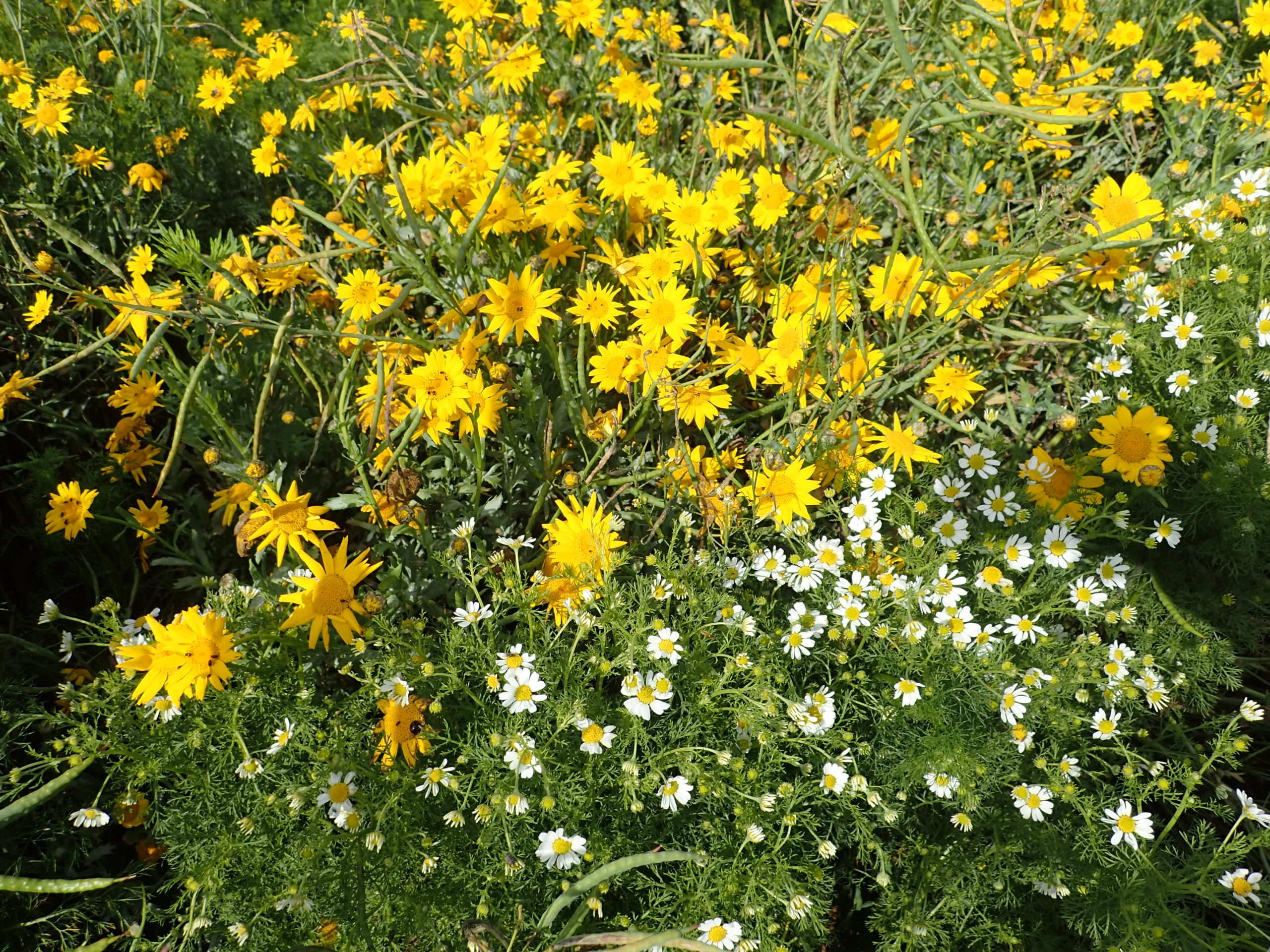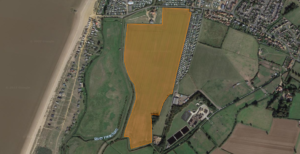


Headline photo credit: Graeme Lyons: Stinking Chamomile and Corn Marigold elsewhere at Wild Ken Hill.
We’ve started work to create a new wildflower meadow adjacent to Heacham village.
The location for the new meadow is a 20-hecatre / 50-acre field called Severnsides, which sits slightly inland from Heacham South Beach.
Recording and monitoring we’ve done in the nearby rewilding area shows that the soils here are capable of holding a really rich assemblage of plants. We’re hoping that the existing seedbank and potential use of seed or green hay from nearby sites could lead to a meadow with a lovely range of floral diversity.
Aside from the plants themselves, creating a meadow encourages a huge range of wildlife including, fungi, insects, spiders, reptiles, amphibians, small mammals, bats, and birds. Nectar is a vital source of food for bees, butterflies, and other invertebrates; beetles will feed on pollen, and the plants themselves are food for aphids and caterpillars. These invertebrates as well as seeds produced by the plants will encourage small mammals and birds. The meadow will also provide homes for these species creating places to shelter, nest, and burrow.
Around the fringes of the meadow, we’ll be planting scrubby species like X, and a small slice of mixed woodland, both of which should provide enhanced cover for birds. And within the meadow, we’re going to create a handful of wildlife-rich ponds on areas where the soil turns to clay and is less free-draining.
We’re not only hoping that the project will be brilliant for wildlife, but will also provide beautiful vistas. Walking South from Heacham South Beach along the inner sea wall – which is soon to be formalised as part of the nationally-important England Coast Path – walkers will be able to look out over the meadow, which we hope will be awash with colour through Spring and Summer.
There are several reasons for picking Severnsides (pictured to the right).

Firstly, the field is isolated from the rest of our farming operation, which is now focused further inland at Ken Hill and further to the south with the neighbours that we farm for. The field itself has also come into very poor condition. In particular, it suffers from a high density of black-grass, a plant that’s particularly effective at robbing crop yields. In fact, for the past two years, we’ve not been able to collect a crop from this field. Intead, we’ve had to put the field into a two-year legume ley to give the soil a chance to regenerate.
The location also makes sense from a nature recovery perspective. Severnsides is adjacent to both the County Wildlife Site that covers the freshwater marsh from Snettisham Beach to Heacham South Beach, as well as the rewilding area, which was created in 2019. So it is consistent with the Government’s approach to nature recovery of having bigger, better, and more joined-up areas of habitat.
Creating a wildflower meadow at Severnsides is also consistent with the Biodiversity Audit produced by UEA for the North Norfolk Coastal Group (of which Wild Ken Hill is a part) in May 2022; one of its themes was to look at land use change away from agriculture on land that is the coastal side of the main coast road (A149).
This is will probably the last piece of land use change that we’ll make in the foreseeable future. We think our model meets the triple imperative of restoring biodiversity, fighting climate change, and sustainably producing food. From henceforth, the focus will be much more on land management rather than land use.
Severnsides field has been in agricultural production for decades, and will have received many applications of synthetic fertiliser over this period. Creating a meadow in this sort of context often involves nutrient stripping, usually through removing biomass with a hay cut or combinable crop like rye. But soil sampling shows that nutrient levels are quite low at Severnsides, most likely due to the light, free-draining soils that Severnsides sits on. That means we can crack on without the need for several years of nutrient stripping. In time, it might be possible and appropriate to graze the new meadow, potentially using the Red Poll cattle from the adjacent rewilding area.
We’ll continue to provide updates on the meadow, and we hope you get to take a look from the inner sea wall in the near future!